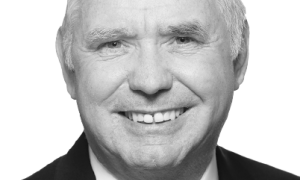Will government-controlled national health insurance increase Americans’ life expectancy?
Sen. Bernie Sanders, I-Vt., and some of his colleagues in the House of Representatives often claim that “Medicare for All” legislation will improve American longevity and reduce American health care costs.
According to a comprehensive 2018 study in the Journal of the American Medical Association, the United States has the lowest life expectancy at birth (78.8 years) among 11 high-income countries. Japan has the highest level of life expectancy (83.9 years).
In a recent Democratic presidential debate, Sanders cited the work of a team of Yale University researchers who, writing in The Lancet, project major savings, plus a significant improvement in American life expectancy. Sanders noted that The Lancet is one of “the most prestigious medical journals in the world.”
He added: “You know what it said? Medicare for All will lower health care costs in this country by $450 billion a year and save 68,000 lives of people who otherwise would have died.”
The Lancet authors based their estimates on their assumptions of the effects of covering the remaining uninsured and securing continuity of coverage.
The Lancet researchers also say their estimate of 68,500 saved lives (to be exact) is “conservative,” but such precise projections should give pause for three good reasons.
First, access to coverage is not the same as access to care, let alone timely access to high-quality care. Experience shows that single-payer systems offer “free” care at the point of service, but these systems are often understaffed by lower-paid medical professionals. That is why there are often significant wait times and delays in care. British and Canadian “single payer” records bear this out.
Not all insurance coverage is equal. For example, those on government welfare programs such as Medicaid are more likely to face steeper climbs in getting access to physicians and medical specialists and securing positive medical outcomes compared to, say, a person enrolled in a standard employer-sponsored health plan. That’s not surprising.
As Dr. Douglas Blayney wrote about the treatment of cancer patients in California in March 2018: “Medicaid in California (MediCal) is neither safe nor effective. If MediCal were a drug, a responsible regulator should consider pulling it from the market.”
Second, overcoming America’s lower life expectancy depends on more than overcoming gaps in health coverage or deficiencies in care delivery, even among the uninsured. Behavioral and other risk factors are involved that have little to do with insurance coverage or whether health care dollars pass through public or private programs.
As a team of researchers wrote in a recent edition of the Journal of the American Medical Association: “Although poor access or deficiencies in quality could introduce mortality risks among patients with existing behavioral health needs or chronic diseases, these factors would not account for the underlying precipitants (such as suicidality, obesity) which originate outside the clinic.”
This is a crucial point.
Consider obesity. American overconsumption of refined carbohydrates, among other factors, contributes to obesity rates that are the highest in the world—and thus contributes directly to high rates of chronic disease, particularly hypertension, heart disease, and diabetes. According to the researchers, mortality rates among Americans in the middle of life increased 114% between 1999 and 2017.
Not surprisingly, about three-quarters of all health spending is focused on treating or mediating the consequences of chronic disease.
Indeed, in a major 2017 study in the Journal of the American Medical Association, researchers estimated that almost three-quarters of the variation in life expectancy in the United States was attributable to behavioral and metabolic risk factors. Within those categories, there also are demographic, geographic, and socioeconomic variations among states and populations.
Moreover, few economically advanced countries record America’s high level of traffic fatalities or have our homicide and suicide rates.
Nor have they experienced our burden of drug abuse. Between 1999 and 2017, according to the researchers, our midlife mortality from drug overdoses increased by a stunning 386.5%. Along with alcohol abuse, these drug overdoses (including opioids) undercut American progress in life expectancy.
Of all the member nations of the Organization for Economic Cooperation and Development, the U.S. had the highest number of opioid-related deaths at 130 per million, followed by “single-payer” Canada with 120 deaths per million. Hard to blame that notoriously elusive “free market.”
Finally, the relationship between mortality and health insurance coverage is not statistically neat and clean. In a 2002 report, the Institute of Medicine concluded that lack of health insurance caused 18,000 deaths annually.
But in 2009, Richard Kronick of the University of California School of Medicine conducted a large study and concluded:
The Institute of Medicine’s estimate of the lack of insurance leads to 18,000 excess deaths each year is almost certainly incorrect. It is not possible to draw firm causal inferences from the results of observational analyses, but there is little evidence to suggest that extending insurance coverage to all adults would have a large effect on the number of deaths in the United States.
There are many other factors beyond health insurance. That’s not to say policymakers shouldn’t work diligently and target expanded coverage for America’s remaining uninsured.
Health insurance with good access to medical professionals and advanced medical technology can secure good medical outcomes and reduced mortality as long as care is timely and of high quality. America’s superior performance in combatting cancer, heart disease, and stroke testifies to that fact.
There is a lot that is right about American health care—its responsiveness and well-documented success in combating deadly disease among them—but there also is a lot wrong with it. There are gaps in coverage and quality. American health markets are also distorted, and these distortions undercut efficiency and increase the costs for individuals and families.
Barriers to market competition at the state and federal levels undercut innovation in design of health insurance benefits and productivity in health care delivery, which also raises costs. The system is burdened by bureaucracy and paperwork, generated by giant government health programs (Medicare and Medicaid) as well as private third-party payers.
And current federal tax and regulatory policies block the portability and personal ownership of health insurance coverage, eliminating the ability of persons to take their coverage from job to job—and maintain the continuity of coverage and care—through different stages of their lives.
Rather than destroying the entire system of public and private insurance by enacting Medicare for All legislation, Congress needs to enact new policies that will expand coverage and personal choices, break down barriers to market competition, and thus lower health care costs for millions of Americans.
This piece originally appeared in The Daily Signal




